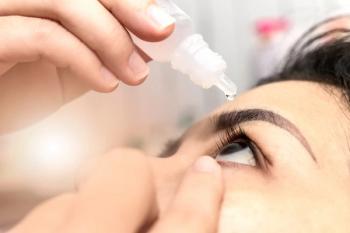
Research data does not verify choroidal thinning
Choroidal thinning is not a feature of glaucoma.
Key Points
Spectral-domain optical coherence tomography (SD-OCT; Heidelberg Spectralis HRA+OCT, Heidelberg Engineering Inc.) was used to measure choroidal thickness. These results did, however, replicate previous findings of age-related choroidal atrophy.
The study was conducted by investigators from Weill Cornell Medical College, New York, and presented in a poster at the American Glaucoma Society annual meeting.
It included SD-OCT data from 21 glaucomatous eyes and 19 normal eyes derived from a population seen in the glaucoma clinic as glaucoma suspects. Subsequent analyses performed using data from an expanded population have been conducted, and the results-which will be described in a forthcoming publication-are consistent with the original findings, said Joshua R. Ehrlich.
Ehrlich is pursuing dual degrees in medicine at Weill Cornell Medical College and in public health at the Joseph L. Mailman School of Public Health, Columbia University, New York.
The senior investigator in the research was Nathan M. Radcliffe, MD, assistant professor of ophthalmology, Weill Cornell Medical College.
"Multiple research teams are working on how best to define the choroid and to determine which scanning and analysis protocols are best," he told Optometry Times. "Published literature includes reports by Richard Spaide, MD, of choroidal atrophy with increasing age and by Yin et al. of choroidal insufficiency as a finding in primary open-angle glaucoma."
Dr. Radcliffe continued, "While we confirmed the age-dependency of choroidal thickness, based on our results, measurement and evaluation of the choroid does not appear to be a useful adjunct to current methods for glaucoma surveillance and management."
Data collection
At the Glaucoma Clinic of Cornell, SD-OCT circle scans of the peripapillary region are obtained as part of the standard protocol for glaucoma evaluation and follow-up.
The investigators were able to use this data that had already been collected during routine care since it was of high enough quality to replicate previous work and since the peripapillary retina seemed to be the most important area to examine in glaucoma.
The reported study included data from 19 eyes of patients who presented to the clinic for glaucoma evaluation but had no clinical, structural, or functional evidence of disease, and from 21 eyes diagnosed with glaucoma based on two reliable and repeatable Humphrey Matrix 24-2 visual fields (Carl Zeiss Meditec Inc.).
There was no statistically significant difference in mean age between the two study groups.
Measuring and segmenting
For each patient's scan, the manufacturer's software was used to segment and measure the RNFL and was adapted to manually segment the choroid by delineating the area between the outer retinal pigment epithelial border and the inner scleral wall. The software calculated the thickness of that region, representing choroidal thickness.
Global thickness measurements and measurements at the quadrants of the peripapillary region were determined for the choroid by two observers masked to the patient's diagnosis, and one observer measured peripapillary atrophy (PPA) from optic nerve photographs.
Both observers performed choroidal thickness measurements at 238 peripapillary locations from 35 eyes. Comparison of the results showed excellent correlation between their measurements, demonstrating the repeatability of the method used for assessing choroidal thickness.
Newsletter
Want more insights like this? Subscribe to Optometry Times and get clinical pearls and practice tips delivered straight to your inbox.
















































.png)


